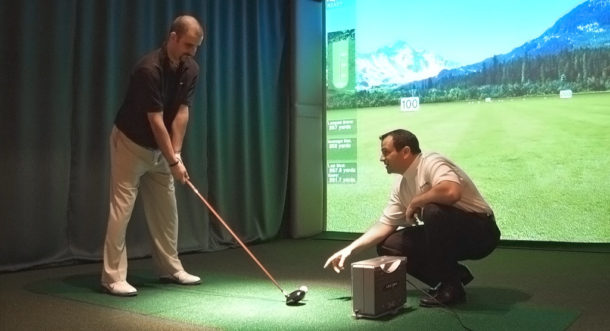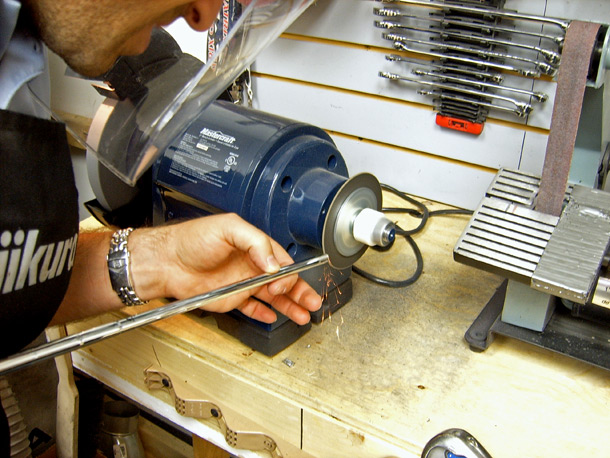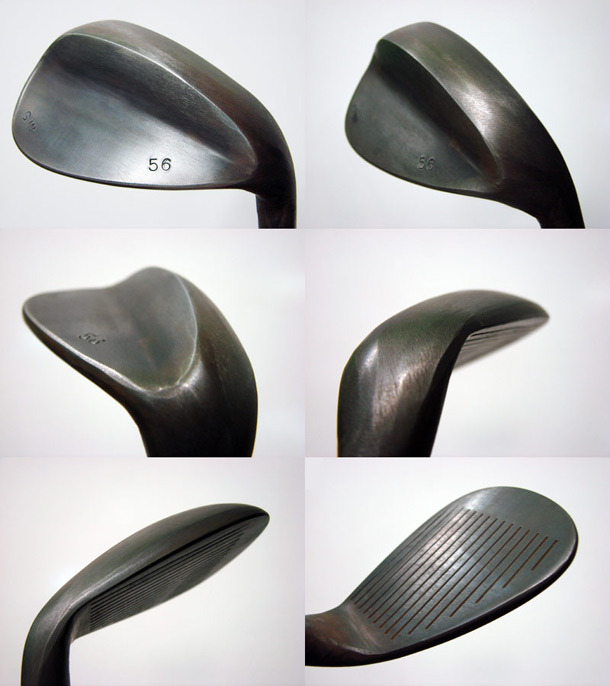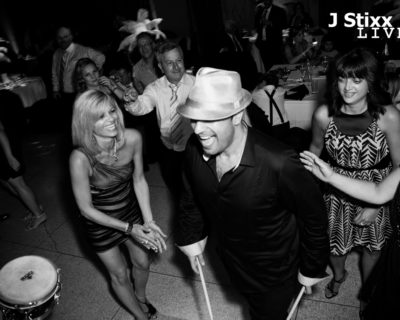Full Service – What To Expect From Custom Golf Club Fitting & Build
From start to finish, ordering new golf clubs through a certified clubmaker like Jeff Shuster is the sort of custom experience you might have at a tailor.
While we know that using clubs that are fitted to you specifically gives you an advantage, we thought we’d dive a little deeper and share just what it is about a properly fitted set of clubs that makes such a difference.
Ultimately, of course, we’re dealing with tools, so it’s the clubs themselves that shave off strokes. But more than that, there’s a mental aspect – we talked about the confidence of a golfer in a previous post – that works in conjunction with your swing to change the game.

Jeff Shuster and a client, analyzing swing characteristics.
So how does the custom golf club fitting experience work?
If we want to optimize the equipment for a golfer, we must first understand the unique characteristics of his/her swing by gathering data and specifications to evaluate how we can improve their performance by using new, or the existing equipment that they currently have.
The Fitting
Through a face to face meeting – exploring the goals of the golfer, experience level, strengths and weaknesses – a fitter will understand the golfer’s game and what they can realistically expect from playing it at this stage in their life.
Evaluation of Current Equipment
The fitter will discuss (and examine if possible) the golfer’s current equipment and explore how it’s impacted their game. From this, the fitter will determine how the golfer has adjusted their swing to fit the clubs. Ideally, it’s the reverse – where the equipment is fit to the preferred swing of the golfer.
Identification of Swing Characteristics
A good quality fitter will use current technology to accurately identify strengths and weaknesses in the swing. Factors like spin rates, impact and launch angles, swing and ball speeds are all measured and recorded. Each variable and their interaction affects equipment requirements and form the overall picture of a player’s potential.
Access to Components
It’s important for your club maker to have access to a variety of manufacturers and suppliers. Since there are no industry baseline standards for component designations such as shaft flex and the like, a golfer must rely on the knowledge of the builder, and that knowledge expands with each manufacturer that the builder has experience with. A builder that only knows one or two suppliers has a limited picture of the landscape.
Once the interview, swing analysis, equipment history and goals are covered, the building begins.
The Build

Jeff Shuster grinding a club shaft.
The building process is crucial to optimizing the feel and performance of custom fit golf clubs, and it makes most sense to be fit at a custom fitting studio where the builder is intimately involved in the building process to ensure that your new clubs be truly optimized for feel and performance as determined during the fitting process.
The only way to achieve this is to measure, quantify and match all of the various characteristics of the golf club which is something only a qualified club builder can achieve. There are characteristics such as swing weight which is the relative weight of the head of the golf club, grip size, length and total weight which contribute to the FEEL of the club which allows you to best operate the golf club on a more consistent and repeatable basis.
Remember, no matter what the manufacturers claim in their advertising, a golf club consists of only three components: a head, a shaft, and a grip. It is only through the custom fitting and building of the best suited components which results in the best fit equipment.
It’s very important that the builder is the same person who did the fitting. A good fitter may know what to order, but will they guarantee that the clubs you receive meet the specs they asked for? Taking a spec sheet to a different builder can mean small changes to swing weight and grip size that result in big changes in the performance.

Club head showing various custom grinds.
At a minimum, have your fitter check the clubs for accuracy of the build. Once the clubs are delivered, a final assessment ensures the accuracy of the club fit and optimization of the equipment. Remember, 2 degrees off on a loft angle can result in 5-10 yards lost in distance – make sure you receive what you were fit for.
Follow-Up
A experienced and professional club fitter/builder is much more than a cashier with access to high-end equipment. As is the case with Jeff Shuster at least, a club fitter should provide personal service for the life of the clubs. The relationship you build with a fitter should result in them becoming part of your team – with everyone working towards the same goal; improvements in your game.
Once the fitting, build and delivery is complete, it’s not unusual for Jeff to accompany golfers to the range, helping evaluate the club’s performance and acclimatizing the golfer to the new clubs. And then, going forward, any professional fitter should be available to provide advice and adjustments depending on the evolution of the player and their requirements.
Professional golf club fitting and building is an art and a custom experience that takes the game to a different level. Much as tailored clothes or personal fitness training, custom golf equipment is specifically fit and built to the specifications of the individual, and along with bespoke gear comes a level of personal service that elevates confidence in the tools and the golfer who uses them.
Jeff Shuster is a Brand Agnostic Club Fitter, a member of the International Clubmaker’s Guild and an FS Local Expert.






